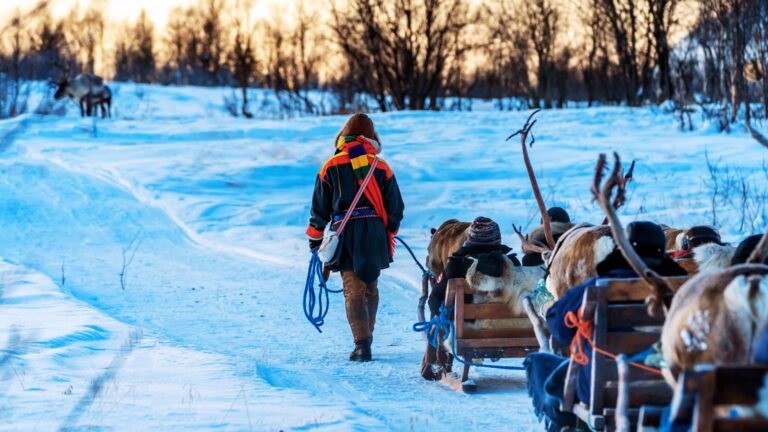The Norwegian parliament (Storting) has issued a formal apology to the Sami, Kven, and Forest Finn communities for over a century of forced assimilation policies aimed at erasing minority languages and cultures.
This initiative follows recommendations by Norway’s Truth and Reconciliation Commission, which detailed the negative impact of the “Norwegianisation” policies on these ethnic and Indigenous groups.

The Norwegianisation policies, formalised in 1851, involved separating children from their families and mandating attendance at state-run boarding schools where only Norwegian was permitted.
These measures, which were intended to integrate minorities by eradicating their unique languages and customs, were not fully dismantled until the late 20th century.
Introducing the Sami
The Sami people are indigenous people native to the northern regions of Norway, Sweden, Finland, and Russia’s Kola Peninsula, where they have lived for thousands of years.
In Norway, they are concentrated in the northern counties, with additional communities across the Scandinavian Arctic.
Known for their distinct language, traditional reindeer herding, and vibrant cultural practices, the Sami have played a crucial role in shaping northern Scandinavia's identity.
Today, there are approximately 50,000–65,000 Sami in Norway, though language loss and modern migration have impacted many Sami traditions, leading to a revival movement in recent years to preserve their heritage and practices.
History of Sami Discrimination
Historically, the Sami people have endured systemic discrimination and forced assimilation under Norway's “Norwegianisation” policy. This policy, which intensified through much of the 20th century, aimed to erase Sami cultural identity in favor of a homogenous Norwegian national identity.
Sami language, religion, and lifestyle were particularly targeted, with education policies becoming one of the primary tools of cultural suppression.
In schools, Sami children faced harsh restrictions. They were often forbidden from speaking their native Sámi language, with Norwegian being the mandated language of instruction.
Sami children sent to boarding schools were isolated from their families, communities, and cultural practices for extended periods, leading to feelings of alienation and a weakened connection to their Sami heritage.
In addition to language suppression, educational curricula excluded Sami history and culture, framing the Sami as primitive or inferior. This institutionalized bias created a legacy of shame and identity crises for Sami children, many of whom struggled to reconcile their cultural background with the Norwegian society they were being forced into.
Even after the Norwegianisation policies were formally phased out in the 1960s, lingering issues persist, with modern-day Sami youth still reporting discrimination and a lack of cultural representation in schools.
The Alta controversy in the late 1970s and early 1980s further highlighted tensions between the Norwegian state and the Sami community. The conflict centered around a proposed hydroelectric dam on the Alta River, an area of profound environmental and cultural significance to the Sami.
Sami activists, joined by environmentalists and other supporters, protested the project, which they argued would flood grazing lands essential for reindeer herding—a central Sami livelihood—and damage sacred sites.
This controversy marked a turning point, leading to a wave of public support for Sami rights and ultimately sparking the establishment of the Sami Parliament in 1989, providing a degree of political voice and cultural autonomy
Conflicts over mining, energy projects, and land use continue to stir controversy, as Sami leaders advocate for greater control over their traditional lands and self-determination.
The Apology
Parliament President Masud Gharahkhani described the apology as a critical step toward reconciliation, expressing “deep regret” for the impact of the policies on individual lives and communities.
A traditional Sami lavvu tent was set up in front of the parliament building, where community representatives gathered for discussions around a fire, reflecting on the effects of the policies and the way forward.
The apology was supported by most parliamentary parties, except for the right-wing Progress Party, which argued that previous apologies from figures like King Harald V and former Prime Minister Kjell Magne Bondevik were sufficient.
However, the majority voted to implement 13 of the commission's recommendations, including the creation of a national competence centre for assimilation policy and a mandate for periodic reporting on Indigenous and minority support efforts.
The president of the Sami Parliament, Silje Karine Muotka, noted that this historic moment marked a step toward healing but called for more to be done regarding ongoing disputes over land and water rights.
Norway’s Truth and Reconciliation Commission joins similar efforts in other Nordic countries, including Sweden and Finland, which are conducting investigations into the impact of past policies on their Indigenous populations.

